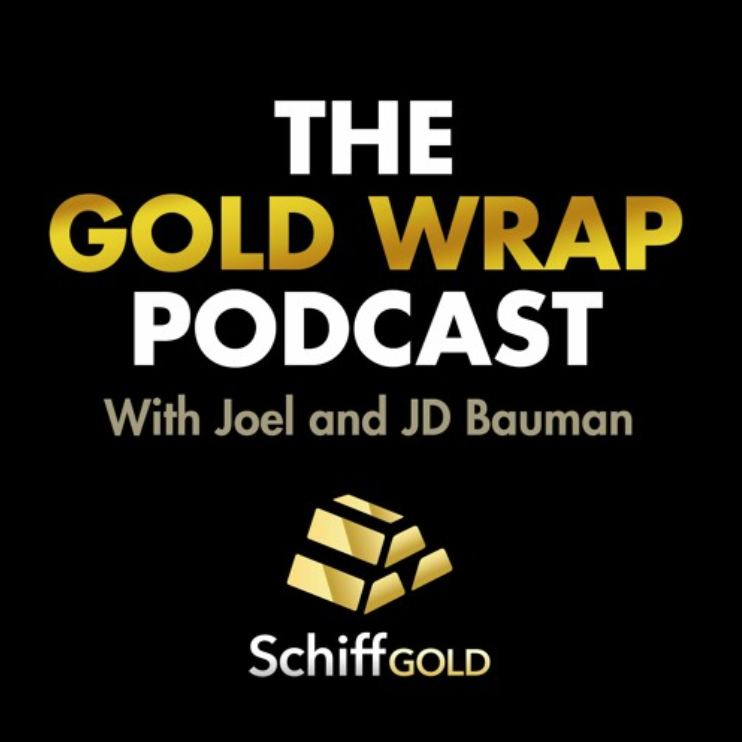Precious metals are apparently waking up. And here is where you can find the best deals.
Site:
Precious metals news
In a revealing "60 Minutes" interview, Federal Reserve Chair Jerome Powell highlighted the precarious fiscal trajectory of the United States, stating that the nation's debt is expanding at a rate outpacing its economy, and it is unsustainable. The U.S. national debt reached a historic high of over $34 trillion in early January, escalating rapidly from the $33 trillion mark hit just three months prior. Amidst ongoing congressional delays in addressing spending deadlines due to disputes over government funding and the soaring national debt, temporary funding measures are in place until early March for various federal agencies, with broader government funding expiring shortly thereafter.
As China grapples with economic slowdown, its significant pivot towards gold has notably influenced global demand, setting new records. The easing of pandemic restrictions has not alleviated the economic stress from a sluggish manufacturing sector, high debt levels, and a property market crisis. This shift has positioned the People's Bank of China as the largest gold buyer last year, a move highlighted by the World Gold Council's recent report. Despite a 5% drop in global gold demand excluding OTC market trades, the inclusion of OTC transactions reveals an unprecedented total demand of 4,899 metric tonnes (about 5,400 tons) for the year, with the average gold price reaching a record high of US$1,940 per ounce, surpassing the previous year's figures.
Gold prices fell to a one-week low, influenced by strong U.S. employment figures and comments from Federal Reserve Chair Jerome Powell, which diminished expectations of early interest rate cuts. The anticipation of a more robust economic stance pushed the dollar and bond yields up, affecting gold's appeal. By midday GMT on Monday, spot gold had decreased by 0.6% to $2,025.99 per ounce, marking its lowest point since January 29. Similarly, U.S. gold futures saw a 0.6% drop to $2,042.60 per ounce.
The Central Bank of Egypt has announced the launch of $1 billion in one-year treasury bills, aimed at attracting investors amid a landscape of rising global interest rates. This follows a successful auction in January, underscoring Egypt's proactive approach to managing its fiscal responsibilities and attracting global investment.
The OECD has issued a stark warning to central banks globally, urging them not to lower their guard against inflation despite some easing trends. It highlighted that it's premature to conclude whether the aggressive rate hikes have effectively curbed inflationary pressures, with core inflation remaining stubbornly high in many countries. The OECD's cautious stance comes amidst a backdrop of the European Central Bank and the Federal Reserve signaling potential rate cuts, a move viewed skeptically by financial markets anticipating more easing.
Global green bond sales are set to surge in 2024, buoyed by the anticipated fall in interest rates in the US and Europe. This favorable shift in the debt market is expected to enhance the appeal of green bonds, following a significant increase in sales in 2023. Europe led this growth, accounting for nearly half of the global market, as central banks globally are seen loosening monetary policies amidst reducing inflationary pressures.
The analysis below covers the Employment picture released on the first Friday of every month. While most of the attention goes to the headline number, it can be helpful to look at the details, revisions, and other reports to get a better gauge of what is really going on.
Amidst rampant peso inflation and his scathing pro-free market speech at Davos, new Argentine president Javier Milei has taken office with radical proposals to overhaul the country. While his brief month and a half in Argentina’s Casa Rosada isn’t long enough to know if his bark will really match his bite, here’s a summary of some of his biggest actions so far:
Discover the potential influences on oil prices, alarming signs in the real estate market, and key developments in silver, Bitcoin, and the 10-year treasury.
Feb 2, 2024 - 12:56:23 PST
The recent shift from remote to in-office work is causing significant discontent among employees, according to a survey by BetterUp. With the reduction of primarily remote roles and a push for returning to the office to foster connection and culture, employees are facing considerable adjustments. This transition is not only disrupting their routines and work-life balance but also impacting their financial well-being—costing them as much as a month's grocery bill. The survey, which included 1,400 full-time U.S. employees, highlighted increased burnout, stress, and intentions to leave their jobs, alongside decreased trust in their organizations, engagement, and productivity.
The World Gold Council is back with some interesting data on central bank gold buying habits. Reported global central bank gold reserves, via the IMF and publicly available sources, rose by a net 28 tons in December...
The recent U.S. job data presents a complex scenario for the Federal Reserve, as job growth surged unexpectedly with 353,000 new positions created across various sectors, and wages grew by 4.5% year-over-year. This robust employment growth, surpassing pre-pandemic levels, and the acceleration in wage increases could challenge the Federal Reserve's confidence in meeting its 2% inflation target. Despite these developments, the strong job market does not necessarily deter the Fed from considering rate cuts later this year, as it balances between fostering economic growth and controlling inflation.
In this week's Friday Gold Wrap Podcast, JD and Joel discuss why gold is down today, why the Fed could replay 2008, and other market and precious metals news.
The Federal Reserve's latest meeting underscored a robust U.S. economic outlook, with Chair Jerome Powell indicating that while rate cuts are on the horizon, immediate reductions are unlikely. The central bank seeks further evidence of inflation control before adjusting rates, emphasizing a methodical approach to ensure sustained economic stability. This cautious stance aims to balance growth, inflation, and employment metrics.
The International Monetary Fund (IMF) has issued a warning against hasty rate cuts by central banks, arguing that premature easing could jeopardize global economic stability. This cautionary stance reflects concerns over the delicate balance between stimulating growth and controlling inflation, as economies worldwide navigate the complexities of post-pandemic recovery and geopolitical uncertainties.
The VIX, often referred to as ‘Wall Street's fear gauge,‘ is currently portraying a sense of calm among investors, registering well below the 20 level.
 U.S. Labor Market Surges with 353,000 New Jobs in January, Crushing Expectations
U.S. Labor Market Surges with 353,000 New Jobs in January, Crushing ExpectationsFeb 2, 2024 - 07:00:03 PST
In January, the U.S. economy showcased its resilience by adding 353,000 jobs, significantly surpassing the Dow Jones estimate of 185,000. Meanwhile, the unemployment rate remained steady at 3.7%, defying expectations of a rise to 3.8%. Remarkably, average hourly earnings surged by 0.6% for the month, doubling the forecast and indicating a year-over-year wage increase of 4.5%, which outpaced the predicted 4.1%. The expansion in employment was broad-based, with professional and business services, health care, and retail trade leading the contributions.
Everyday people willingly spend years of their earnings on a mundane object in one of the first market manias in history...
January 2024 saw Europe's bond market shatter records, with over €350 billion in new debt sold. Public sector issuances, particularly from sovereigns, accounted for a staggering 55% of this total, highlighting a bumper month supported by a rush to secure yields before expected central bank rate cuts. Countries like Italy, Spain, France, and Germany led the charge, with Greece making a triumphant return to investment grade, pulling in record orders for its new bonds.
The story of America's job growth is more complex and nuanced than the government wants us to believe. In a world where job numbers wield significant influence over perceptions of economic health, it's crucial to scrutinize the data—and the methods behind their presentation—closely.In his latest podcast, Peter Schiff delves into the murky waters of government economic reporting.












